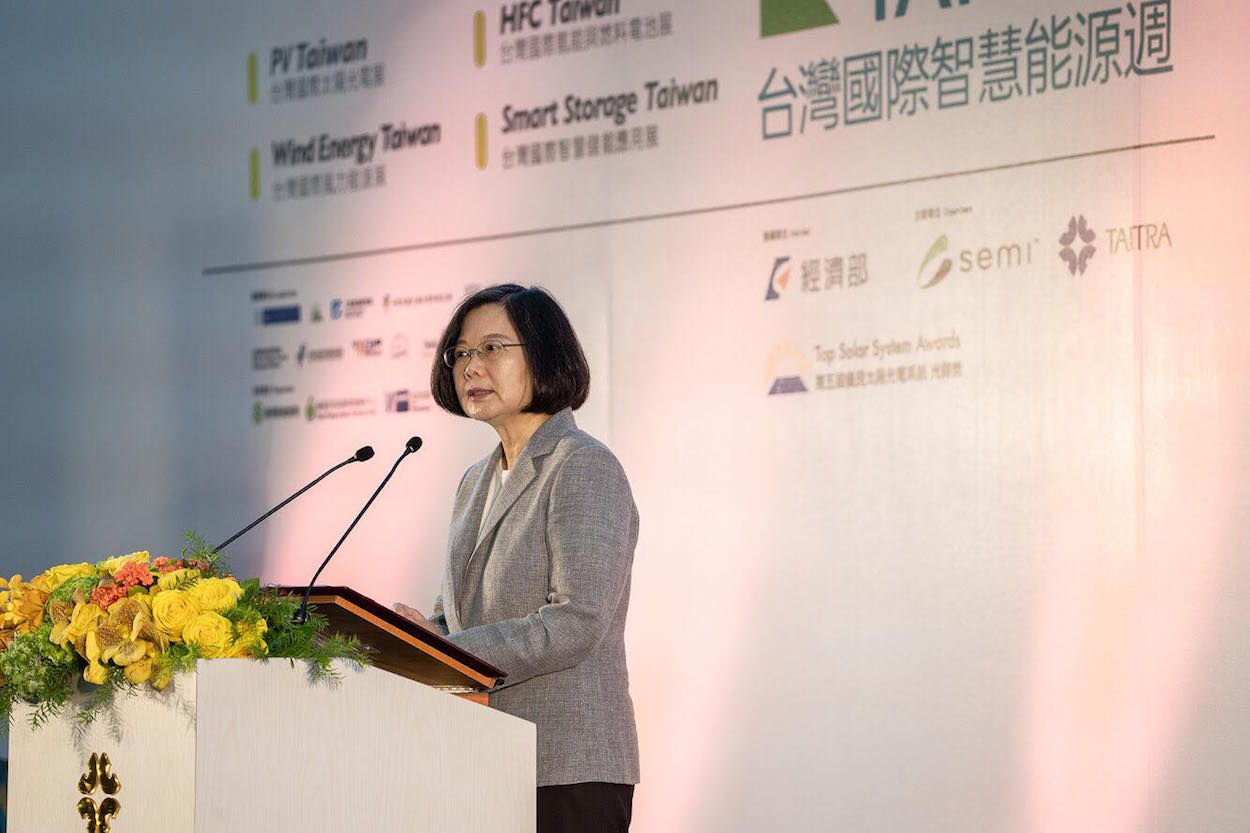by Brian Hioe
語言:
English
Photo Credit: Tsai Ing-Wen/Facebook
A PATTERN OF reporting in Taiwanese media that Taiwanese firms are planning on relocating back to Taiwan from China because of the current American trade war with China should be looked at with a great deal of skepticism. This has primarily occurred because of America’s trade war with China was kicked off by American president Donald Trump, who a great deal of Taiwanese media continues to perceive as anti-China in such a manner that benefits Taiwan.
That is, while such reports may fit a convenient media narrative–that Trump’s trade war with China is benefitting Taiwan, with the view that Trump has Taiwan’s best interests at heart—such reports are likely misleading for the same reason. There is the possibility that the exaggeration of such reports, however, may in fact lead to confused views by the Tsai administration about what steps Taiwan should take next in order to compensate economically.
 Photo credit: Gage Skidmore/WikiCommons/CC
Photo credit: Gage Skidmore/WikiCommons/CC
For one, first and foremost, Donald Trump’s trade war with China has not gone on long enough that it could have already had the immediate impact of moving Taiwanese businesses back to Taiwan. To be sure, such media reports have primarily been on Taiwanese businesses considering moving back to Taiwan, but one also notes that this seems unlikely for a number of reasons left out of most media reporting.
Taiwanese businesses moved to China because of cheaper costs compared to Taiwan. With higher costs in China in past years, this is why some Taiwanese businesses are considering moving production to Southeast Asia, in which production costs are cheaper.
Consequently, the process of movement outside of China may be accelerated by the trade war between America and China, which may also stand to affect Taiwanese goods assembled in China, or in which large elements of the production process are based out of China. But it still seems unlikely that Taiwanese businesses seeking to get out of China would return to Taiwan, which has transitioned to a service sector economy, whose manufacturing industry is not as large as it once was, and which simply may not have the resources to host large factories comparable to what Taiwanese companies could operate in China.
Hypothetically, the Tsai administration’s push for the Taiwanese companies building economic and political ties in Southeast Asia through the New Southwards Policy as a means of weaning Taiwan off of economic dependence on China may benefit indirectly from the US-China trade war because it will push Taiwanese companies towards southeast Asia. Taiwanese companies have historically been reluctant to build stronger economic ties with Southeast Asia because of the higher linguistic and cultural barriers between Taiwan and Southeast Asia versus Taiwan and China.
Nevertheless, there are some signs that the Tsai administration would actually hope to bring manufacturing back to Taiwan, instead of pushing Taiwanese companies towards southeast Asia. For example, it may be no mistake that the changes to the Labor Standards Act controversially pushed for by the Tsai administration in the last year undid close to thirty years of labor reforms in Taiwan. This would bring Taiwan back to labor conditions reminiscent of the heyday of Taiwanese manufacturing, perhaps luring manufacturing back to Taiwan.
 Taiwanese president Tsai Ing-Wen. Photo credit: Tsai Ing-Wen/Facebook
Taiwanese president Tsai Ing-Wen. Photo credit: Tsai Ing-Wen/Facebook
In the past several years, one has observed many cases of economic nationalism and nostalgia for past economic periods taking precedence over an understanding of the present, globalized trade paradigm which all contemporary nation-states operate under. Some countries which have long moved past manufacturing-dominated economies to become service-sector industries seeking to return to manufacturing, with the confused view that manufacturing represents the backbone of a nation’s economy, and that in order to return the glory days of a nation’s economy, one needs to bring back manufacturing.
The most striking example of this would be the United States, with Donald Trump elected on promises that he would bring manufacturing back to America–an absurd claim particularly coming from the nation which is world’s largest economy. However, one fears that this sort of muddled thinking will also appear in Taiwan.
If so, the end result would simply be that the Tsai administration attempting to give Taiwanese capitalists more power over the Taiwanese working class to lure Taiwanese capitalists to bring factories back to Taiwan. Otherwise, the Tsai administration may attempt to use the US-Taiwan trade war lure Taiwanese to southeast Asia to exploit southeast Asian workers. Or it may try and adopt a mixture of both strategies. This remains to be seen.

